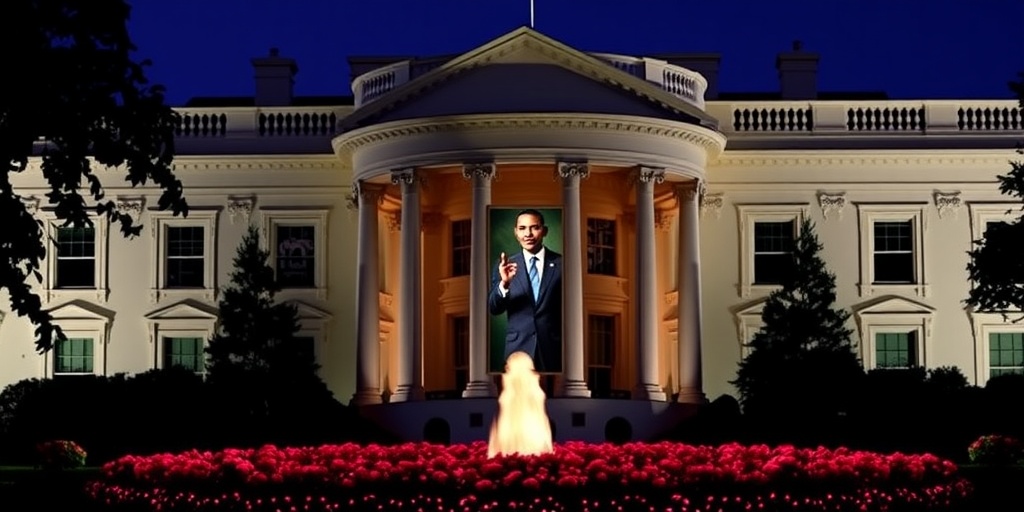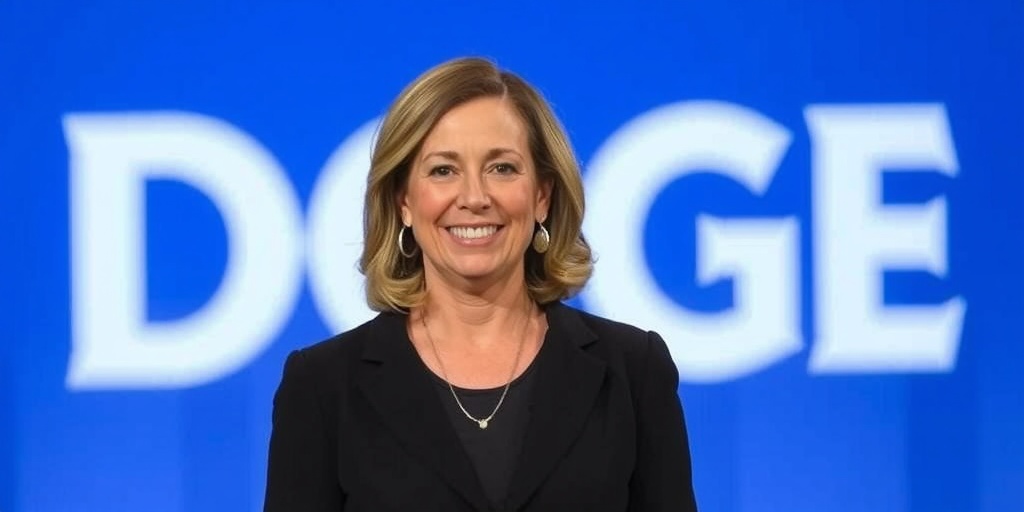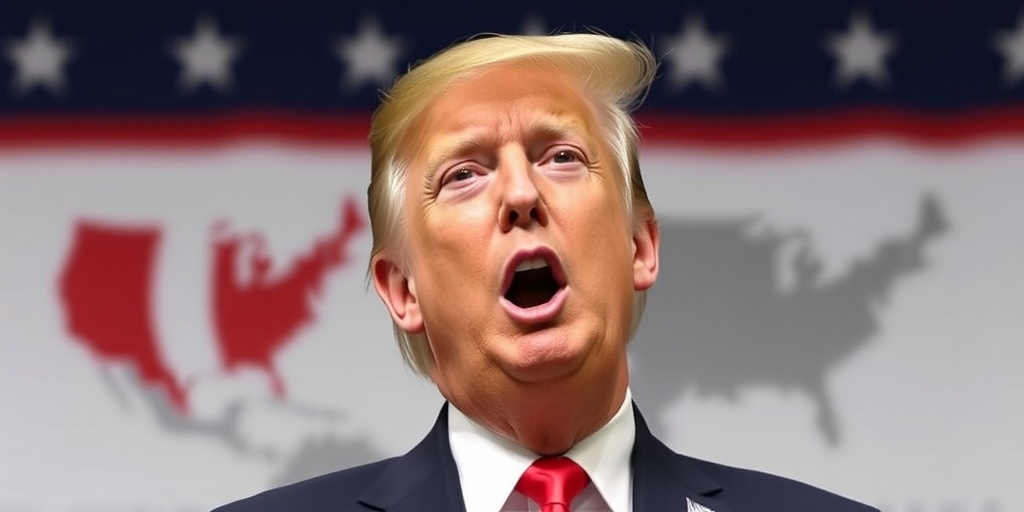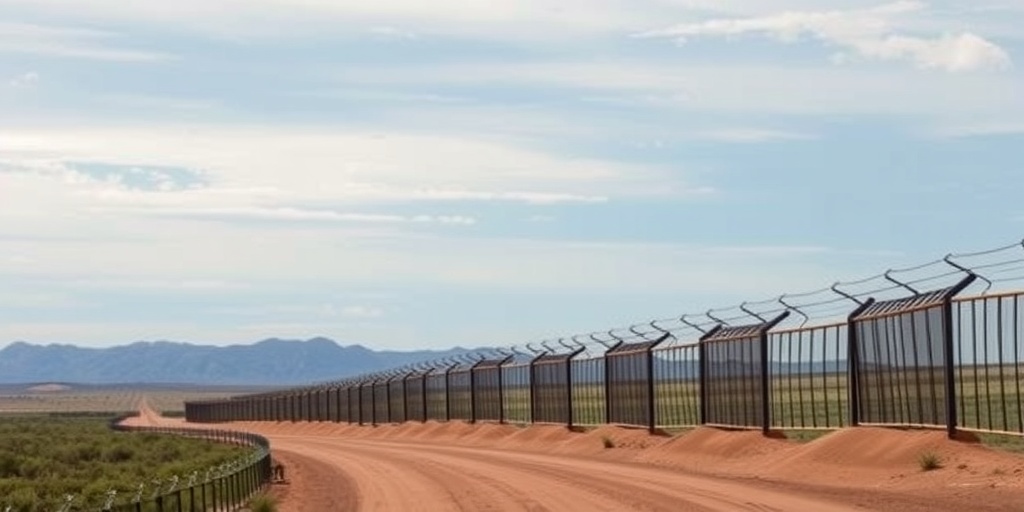Now Reading: White House Relocates Obama Portrait for Trump’s Installation
-
01
White House Relocates Obama Portrait for Trump’s Installation
White House Relocates Obama Portrait for Trump’s Installation

Trump Replaces Obama Portrait with Controversial Artwork in White House
In a move that has stirred considerable debate among historians and political commentators, the Trump administration announced on Friday that a portrait of former President Barack Obama has been removed from a hallway in the White House and replaced with a striking pop-art painting of President Donald Trump. This new artwork features Trump pumping his fist, a moment captured following a dramatic assassination attempt last year while he was campaigning in Butler, Pennsylvania.
The action of rotating artwork and portraits is not unusual for the White House; however, the choice of a self-referential piece depicting the sitting president has drawn criticism. Presidential historians have noted that it is uncommon for any president to hang a portrait of themselves during their time in office. Traditionally, portraits of presidents and first ladies are unveiled and displayed only after they have left the presidency.
Following this shift in decor, a spokesperson for Barack Obama declined to provide comment, leaving the media to speculate about the implications of replacing the former president’s portrait with Trump’s assertion of triumph in the form of art.
The striking new piece, which was publicly introduced through a post on social media by the White House, portrays Trump with extensive detail. Surrounded by a team of Secret Service agents, an American flag billows behind him against a cloudless blue sky, and streaks of red cross his face, alluding to the violence he faced during the assassination attempt. The vivid imagery is reminiscent of still photographs captured shortly after the attack when a would-be assassin fired at Trump, grazing his ear as he delivered a campaign speech in July. Following the incident, Trump’s rallying cry of "Fight! Fight! Fight!" has become emblematic among his supporters.
The White House has indicated that Trump’s painting is strategically placed opposite from Obama’s portrait, signaling a clear juxtaposition between the two administrations. White House Press Secretary Karoline Leavitt stated that the “executive mansion is the president’s home, and he has the right to make changes as other presidents have in the past.” She emphasized that the artwork symbolizes a significant historical moment when Trump narrowly escaped death.
Critics, however, have voiced their disapproval of the decision. Ted Widmer, a presidential historian at Brown University and former speechwriter for President Bill Clinton, expressed surprise and disappointment over the new installation. “It just seems tacky,” Widmer commented, suggesting that such displays detract from the tradition of honoring past presidents with dignity—regardless of party affiliation. He pointed out the unsettling nature of living in a space adorned with images of oneself.
Conversely, some historians argue that this is consistent with Trump’s longstanding rivalry with Obama. Julian E. Zelizer, a historian at Princeton University, proposed that Trump’s choice to feature himself prominently reflects a desire to symbolically overshadow his predecessor. “In the second term, it’s not just about winning the White House,” Zelizer remarked, noting Trump’s animosity towards Obama has been evident since the early 2010s.
Barbara A. Perry, a presidential studies expert at the University of Virginia, found the visual presentation—especially the depiction of blood on Trump’s face—particularly problematic. She compared it to other historical instances, stating, “Can you imagine Gerald Ford having a portrait painted of himself ducking?” This reference to the assassination attempt against Ford in 1975 highlights how modern political expressions in art can evoke differing standards of taste and respect for the office.
As the debate surrounding the painting continues, the broader implications touch on long-held traditions of presidential decorum and the evolving nature of political identity in contemporary America. The contrasting representations of Obama and Trump are sure to provoke ongoing discussions surrounding the legacies of both presidents, and what it means to hold the office in today’s highly polarized political climate.
In conclusion, the decision to display a self-referential portrait in the White House raises questions about the interaction between art, politics, and the enduring narratives that shape the presidency in the 21st century. While some view it as a bold statement of resilience and identity, others criticize it as a departure from the noble traditions of the American presidency. The discourse surrounding this change reflects not only on the individuals involved but also on the complex dynamics of power, memory, and representation in the current political landscape.
Stay Informed With the Latest & Most Important News
Previous Post
Next Post
-
 01New technology breakthrough has everyone talking right now
01New technology breakthrough has everyone talking right now -
 02Unbelievable life hack everyone needs to try today
02Unbelievable life hack everyone needs to try today -
 03Fascinating discovery found buried deep beneath the ocean
03Fascinating discovery found buried deep beneath the ocean -
 04Man invents genius device that solves everyday problems
04Man invents genius device that solves everyday problems -
 05Shocking discovery that changes what we know forever
05Shocking discovery that changes what we know forever -
 06Internet goes wild over celebrity’s unexpected fashion choice
06Internet goes wild over celebrity’s unexpected fashion choice -
 07Rare animal sighting stuns scientists and wildlife lovers
07Rare animal sighting stuns scientists and wildlife lovers




















